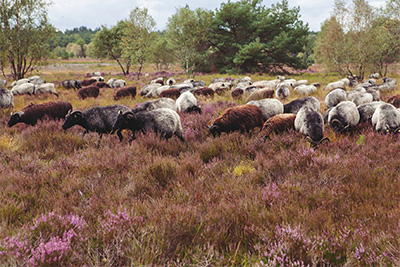 |
 Heidschnucke Sheepskins Heidschnucke Sheepskins
These are unusual sheepskins. A heritage breed of moorland sheep from northern Germany, Heidschnucke are distinctive with a history of resilience. The variations of fleece include long and coarse wool. These rare sheepskins are a broad range of natural colors, and the wool fibers have a robust structure.
The preservation of the Heidschnucke sheep aligns with broader European Union efforts to maintain biodiversity and support sustainable agriculture. By supporting heritage breeds like the Heidschnucke, the EU helps safeguard unique genetic traits that might otherwise be lost. European standards in agriculture and processing ensure that Heidschnucke sheepskins are produced in an environmentally friendly and ethical manner. These standards promote sustainable farming practices, animal welfare, and eco-friendly processing methods.
See below for more about Heidschnucke Sheep.
|
|
Heidschnucke sheep originate from the Lüneburg Heath in northern Germany, where they have been an integral part of the region's agricultural heritage for centuries. Known for their hardiness and ability to thrive in harsh environments, these sheep were traditionally raised in sustainable, low-impact farming systems. This heritage breed is an important link to the past, preserving the genetic diversity and traditional farming practices.
The European heath is an increasingly rare habitat. Heidschnucke are particularly adapted to eating moorland grasses and the purple heather. The continued existence of Heidschnucke sheep ensures the maintenance of genetic diversity, which is vital for the resilience and adaptability of livestock populations. Supporting the Heidschnucke breed goes beyond acquiring a high-quality product, it is also an investment in biodiversity and sustainable agriculture.
|
|
|